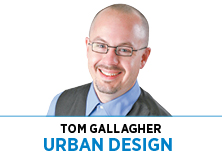Subscriber Benefit
As a subscriber you can listen to articles at work, in the car, or while you work out. Subscribe Now As I write this, Indiana Fashion Week is wrapping up. If you didn’t know about it, maybe you encountered the Flashmob Fashion Show at the Indiana State Fair, a themed photo booth downtown, or the Fashion Fair on Monument Circle.
As I write this, Indiana Fashion Week is wrapping up. If you didn’t know about it, maybe you encountered the Flashmob Fashion Show at the Indiana State Fair, a themed photo booth downtown, or the Fashion Fair on Monument Circle.
Local not-for-profit Pattern was key to Indiana Fashion Week’s success and is an organization you should be keeping an eye on. You might know Pattern as a fabulous, national-level, fashion publication. But its mission goes beyond publishing a magazine. It seeks “to grow the local creative economy and provide a platform for creative expression for up-and-coming creatives of all kinds, but especially in the areas of fashion, photography, graphic design, digital & social media, art and music—our goal is to keep Indiana talent in Indiana.”
It isn’t an accident that some cities become synonymous with fashion and other artistic endeavors. Creatives recognize the subtleties, craft, artfulness and meaning imbued in physical places and are drawn to those that have a compatible vibe.
Design is often misconstrued to be a luxury. Yet, at its core, design is about creatively solving the problems we all face at any scale. In defense of design, practitioners often downplay the importance of beauty, but aesthetic must not be dismissed.
Urban design could take some cues from fashion design. While clearly solving a basic necessity, fashion elevates the mundane by addressing bigger questions like, how does what we wear make us feel about ourselves, what does it say about who we are and how does it show respect for others?
We could attend an in-person interview in a T-shirt and pajama bottoms, satisfying the basic expectation of covering all the appropriate parts. Yet we are more likely to wear an outfit that makes us feel confident and signals to others that they and the occasion are worthy of extra attention.
Consider extending the same concept to the design of a street or public space. While it might be appropriately engineered, does it help us feel safe? Does it provide me a level of comfort? What does the quality of the materials say about our shared values, our longevity, our commitment to quality? Does it make us feel proud of and confident in our community? Is it welcoming and respectful to the full range of residents who make up our city?

Recently, a colleague introduced me to the work of Lewis Miller, an artist who brings beautiful, oversized floral arrangements to urban public spaces in unexpected ways—moments he calls Flower Flashes. The picture accompanying this column is from his Instagram page. It says so much about what makes great urban spaces so meaningful.
It would be easy to dismiss this work as a trivial accessory or bauble, but I see more: a moment of multi-sensory beauty from a single creative mind, enhancing the urban setting and creating a welcoming and consequential experience and likely a lasting memory. Cities’ essential purpose is bringing people together and creating these kinds of small moments that we can share.
This is the next evolution of our city—embracing beauty as necessity and building a more solid and supportive creative economy. This will take time. Outstanding organizations like Pattern that have been plowing the ground for more than a decade and fresh ones like GangGang are not waiting. They are leading us into the future. Give them a look, and see what they are up to next.•
__________
Gallagher is a principal and urban designer with Ratio and a professor-in-practice of urban design at Ball State University. Send correspondence to [email protected].
Please enable JavaScript to view this content.
